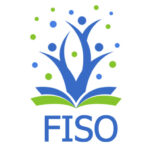Syllabus of Digital Technology
(International Round)
Category 1 (Grade 1 – 2)
1.Introduction of computer
2.Main Parts of Computers
3.Introduction to Keyboard and Mouse
4.Starting and Shutting down Computer
5.Introduction to MS Paint
6.Types of computers
7.Parts of computer
8.Working of computer
9.Keyboard and mouse usage
10.Uses of computer in our world
11.Notepad
12.MS-Paint
13.WordPad
Category 2 (Grade 3 -4)
1.Introduction to hardware and Software
2.Introduction to Windows 10
3.MS-Paint
4.MS-Word
5.WordPad
6.Internet
7.Notepad
8.History of computer
9.Input and Output Devices
10.Memory and Storage Devices
11.Software Classification
12.Windows 11
13.MacOS
Category 3 (Grade 5 – 6)
Introduction to Computers, Computer Generations, Computer Peripherals, MS Word: Features, Creating Table Working with objects in MS Word, Advanced features, MS Power point Presentations, creating a presentation, Backgrounds and slide organization, Adding Graphics and organization charts, Enlivening a Presentation, Microsoft Excel, Internet & E-mail, Flowcharting, MS-Windows, Introduction to QBasic, Hardware, Software, Input & Output Devices, Memory and Storage Devices.
Category 4 (Grade 7 – 8)
Introduction to Computers, Data Storage Devices, more about Windows, More Logo Commands, More Commands in Logo, Editing Text in MS Word, Formatting in MS Word, Introduction to MS Power Point, Working with text in MS Power Point, Multimedia, Input & Output Devices, Hardware, Software, Memory – Primary & Secondary Memory, MS-Paint, Internet, Computer Networks. Charts, Internet, Macromedia Flash, Drawing in Flash, Q Basics, Q Basic statements, Memory & Storage Devices, Using Windows.
Category 5 (Grade 9 – 10)
Introduction to computers, Evolution of Computers, Microsoft Excel Editing cell contents in MS Excel, Formatting Data in MS Excel, Formulae in MS Excel, Advanced features of MS Excel, Creating MS-Word, MS-PowerPoint, Networking. Computer Viruses – Types, Prevention, Antivirus, Updating virus definitions, Q Basic – Looping statements, Graphics and Sound, Internet – Searching Information, Communication on the Internet, Flash – Tools, Understanding timeline, Frames and Key frames, Layers and Animation, HTML Basics – Introduction to HTML, HTML Elements – Tags and Attributes, Structure of an HTML Document, Creating an HTML Document, Line Break
Tag, Paragraph
Element, Horizontal Rule
Element, Comment Element, HTML Text – Text Elements, Address Tag, Pre Tag, Center Tag, Heading Tag, Font Tag, Base Font Tag Structure, Commands, ( Tables and Linking), MS Access – Database and Fields, Modifying table designs. Fundamentals of computers, MS-PowerPoint, MS-Excel, Memory & Storage Devices, Basics of Cyber-crimes, Cyber Laws, Operating Systems.
Category 6 (Grade 11 – 12)
Computer basics, Computer System – Evolution and History of computers, Generation, Electronic Computers, Hardware and Software, Language, Terms related to open and non-open source software, Operating system – Windows XP, MS Word, MS Front Page, Visual Basic – GUI, VB Window, Farm object, Common controls, Photoshop – Tools, Layers, Filters, Networking and E-commerce, Algorithms and Flowcharts in Programming, Animals, HTML, MS-Excel, MS-PowerPoint, Input & Output Devices, Memory & Storage Devices, Flash CS6, Communication Technology, Operating Systems, MS PowerPoint, MS Excel, Visual basic – Tool box, Working with data, Selection and looping, C++ – Structure, Variable, Constants, Standard I/O. Operators, Control structure, Internet – History, Internet services, Web – browsers, MS Access – Creating new Database, Tables, Forms, Queries and reports, Societal Impact of Information Technology – Security and Integrity of information, HTML – Creating Lists and Inserting Images, Linking – Creating Hyperlinks using Tag, Link Within a Single Page, Creating Images as Link, Fundamentals of computer, Operating System, Word Processing Tool, Networking, Internet, Database Management System (Functions, Types, MS-Access).



